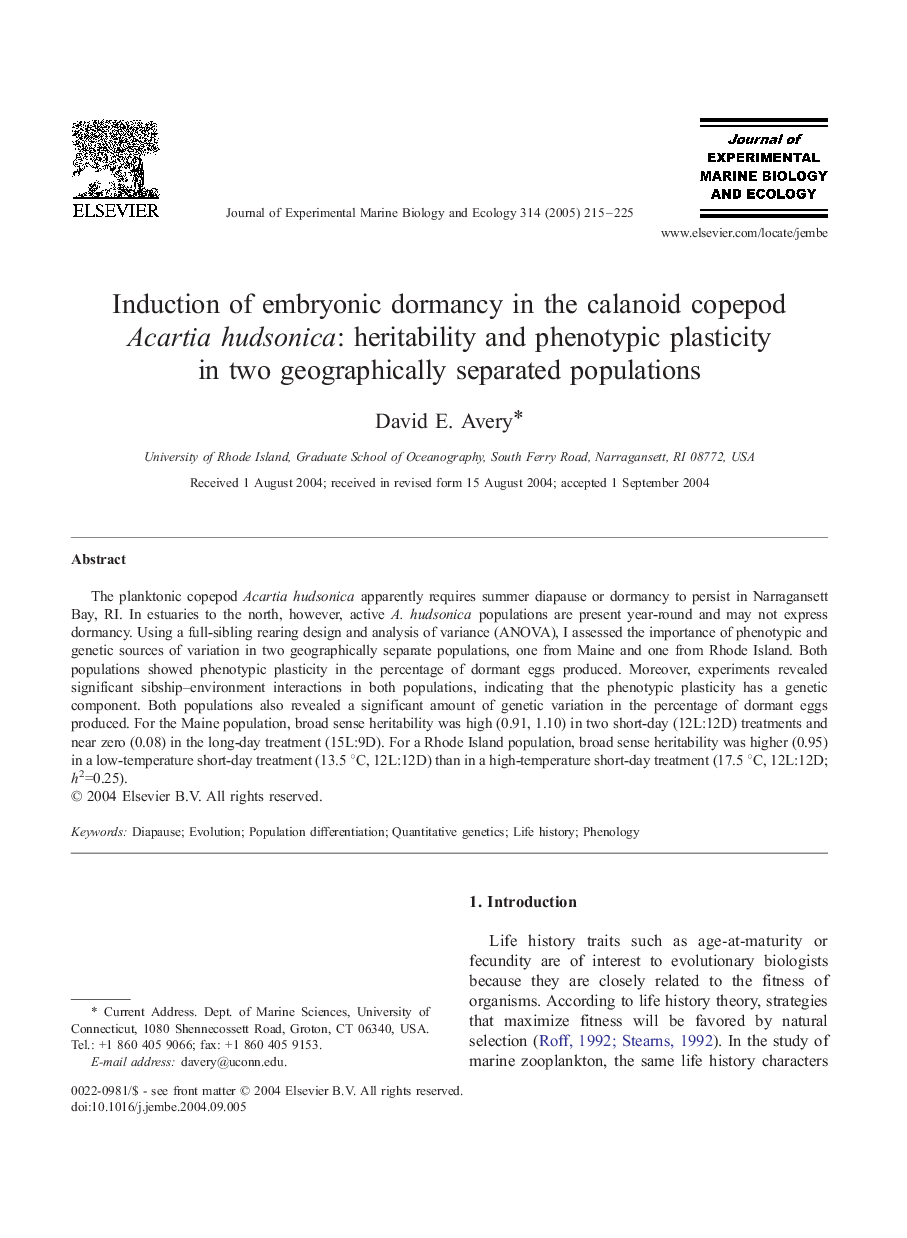| کد مقاله | کد نشریه | سال انتشار | مقاله انگلیسی | نسخه تمام متن |
|---|---|---|---|---|
| 9448872 | 1305962 | 2005 | 11 صفحه PDF | دانلود رایگان |
عنوان انگلیسی مقاله ISI
Induction of embryonic dormancy in the calanoid copepod Acartia hudsonica: heritability and phenotypic plasticity in two geographically separated populations
دانلود مقاله + سفارش ترجمه
دانلود مقاله ISI انگلیسی
رایگان برای ایرانیان
کلمات کلیدی
موضوعات مرتبط
علوم زیستی و بیوفناوری
علوم کشاورزی و بیولوژیک
علوم آبزیان
پیش نمایش صفحه اول مقاله

چکیده انگلیسی
The planktonic copepod Acartia hudsonica apparently requires summer diapause or dormancy to persist in Narragansett Bay, RI. In estuaries to the north, however, active A. hudsonica populations are present year-round and may not express dormancy. Using a full-sibling rearing design and analysis of variance (ANOVA), I assessed the importance of phenotypic and genetic sources of variation in two geographically separate populations, one from Maine and one from Rhode Island. Both populations showed phenotypic plasticity in the percentage of dormant eggs produced. Moreover, experiments revealed significant sibship-environment interactions in both populations, indicating that the phenotypic plasticity has a genetic component. Both populations also revealed a significant amount of genetic variation in the percentage of dormant eggs produced. For the Maine population, broad sense heritability was high (0.91, 1.10) in two short-day (12L:12D) treatments and near zero (0.08) in the long-day treatment (15L:9D). For a Rhode Island population, broad sense heritability was higher (0.95) in a low-temperature short-day treatment (13.5 °C, 12L:12D) than in a high-temperature short-day treatment (17.5 °C, 12L:12D; h2=0.25).
ناشر
Database: Elsevier - ScienceDirect (ساینس دایرکت)
Journal: Journal of Experimental Marine Biology and Ecology - Volume 314, Issue 2, 28 January 2005, Pages 215-225
Journal: Journal of Experimental Marine Biology and Ecology - Volume 314, Issue 2, 28 January 2005, Pages 215-225
نویسندگان
David E. Avery,